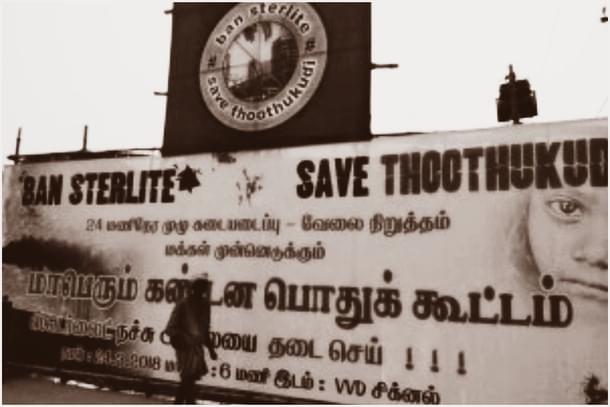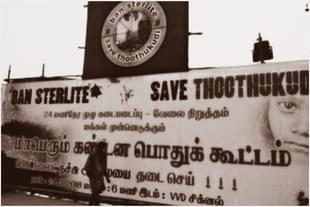Business
In Numbers: What Was Lost With Closure Of Sterlite Copper In Tuticorin
Abhinav
Jan 20, 2022, 11:10 AM | Updated 11:10 AM IST
Save & read from anywhere!
Bookmark stories for easy access on any device or the Swarajya app.


From the Copper Age to the present times, the need for copper has never diminished for society. From defence to automobile, numerous industries are dependent on copper either directly or indirectly. Copper is critical for any country to maintain a healthy industrial ecosystem.
Unfortunately, India has been pushed backwards in this race. Ever since Sterlite Copper, the indigenous copper manufacturing behemoth in Thoothukudi, Tamil Nadu, was forcefully closed following pressure by protests, India is suffering setbacks in copper availability.
Speaking to Swarajya, a metal and mining industry expert said, "In 2020 the size of global copper market was $271.99 billion. The market value is witnessing a rise of 4.21 per cent each year. But India's share in such a huge industry is just 3 per cent and it may further fall down in coming years. Shutting down Sterlite is the direct reason for this steep decline. The annual requirement of copper is 8 lakh tonnes, of which 50 per cent was satisfied by Sterlite alone. Then Sterlite planned to expand its production capacity to 8 lakh tonnes; if that had happened, it would have completely stopped India from depending on imports. India's share in global market too would have reached 7 per cent.
"Now India is forced to become an importer of refined copper and it [imports] increased from 44,245 tonnes in 2017-18 to 92,290 tonnes in 2018-19. As a result, India incurs a net foreign exchange outflow of US $1.2 billion due to imports. But still demand for copper is increasing at a rate of 10 per cent CAGR, which would further strain the economy. Previously, India was exporting copper and China was our bulk customer (over 75 per cent) followed by Taiwan (13 per cent). The closure of Sterlite has immensely helped Chinese companies in increasing their production capacity".
The Sterlite plant provided direct employment to around 3,500 to 4,000 people and more than 70 per cent of these employees were from Tamil Nadu alone, according to the industry expert. Further, the plant's operations impacted more than 20,000 people who were engaged in various supply and customer units. With its closure, a total of more than 25,000 jobs, directly and indirectly, were affected.
Sterlite had 350 customers for copper, 27 customers for sulphuric acid, 4 customers for phosphoric acid, 40 customers for gypsum and slag. The customers of Sterlite are big manufacturers themselves who had a separate supply chain for their products. This industrial ecosystem in total had 650 supplies and service partners who helped in generating a business which is close to $134 million every year. It immensely helped in saving huge foreign exchange too. Sterlite being the nodal factory, when it got closed the entire industrial network came under shambles, said the expert who follows metal and mining industry.
Sterlite Copper was utilising 4 per cent of the capacity of the VOC port in Thoothukudi for supply chain activities and contributed 17 per cent of the total revenue earnings of the port, according to him. In the year following the shutdown, the operating income of the port reduced 15.44 per cent in 2018-19 to Rs 520 crore in comparison to operating income in 2017-18. That's because the volume of cargo was reduced from 36.57 million tonne (MT) in 2017-18 to 36.07 MT in 2019-20. As a chain reaction, it affected logistics, stevedoring and port operations that employ approximately 9,900 people and thousands of truck drivers/cleaners who use to drive on daily basis with consistent load.
Annually, Sterlite Copper has been paying up to Rs 2,559 crore to the exchequer by way of taxes and other statutory contributions. Of this, Rs 1,616 crore is spent on IGST alone, while up to Rs 348 crore is spent on excise duty. Further, Sterlite Copper's dependent domestic companies contributed approximately $295 million to the exchequer.
In total, the cumulative outflow into Thoothukudi’s economy through Sterlite Copper’s operations adds up to Rs 635 crore per annum, which has now ceased. Capital expenditure of Rs 699 crore allocated by Sterlite Copper for the purpose of expanding the installed capacity has been sunk. If the expansion of the plant had happened, the plant would have become the largest single location plant in the whole world in terms of production capacity.





